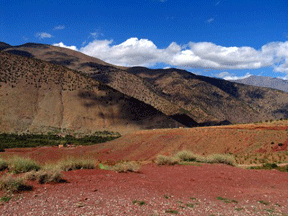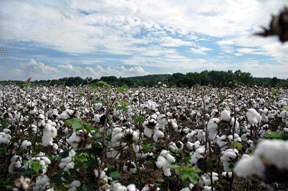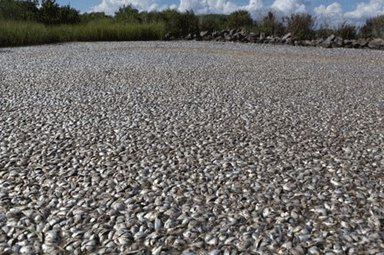2,000 Indian Villages Skip Fossil Fuels, Get First Electricity From Solar
If you ever need a great example of technological leapfrogging in practice, here it is: In the Indian state of Orissa, the state government has decided to electrify approximately an additional 2,000 villages by March 2012. But rather than hook them up to coal-fired power plants, it will be using decentralized solar power. Biomass, wind power and a variety of small-scale hydropower projects are also in the mix.
Express Buzz reports that currently there are 395 villages powered through solar, with an additional 205 to be completed by the end of the year.
Further renewable energy development in Orissa include 118 MW of biomass plants. Two wind power projects, 150 MW in size are in the works, with surveys for 22 more locations underway. Micro, mini and small-scale hydropower projects are also planned to deliver an additional 300 MW.
Given that in India projects can get bogged down in bureaucracy and money-in-handshakes all too often, we’ll have to see how all these plans bear out. But it’s a great example of how in some ways places which don’t have any existing electricity infrastructure, and already low existing demand, actually have fewer hurdles to clear in bring clean power, to people who truly need it.
What’s more, the benefits for people who have so little electricity access of an additional 150 MW of wind power are far greater than deploying that amount in someplace like the United States, where electrical consumption norms are so much higher, both by personal habit and systemic demand.
Shared by TreeHugger, an online media outlet dedicated to driving sustainability mainstream
The Rise of the Green Collared Worker
The prediction that the transition to a green or low carbon economy will result in a booming demand for so-called green collar workers is already being borne out in government policies. President Obama’s plan to turn around the US economy includes a USD150bn investment in green energy over the next ten years, driving America towards energy independence whilst creating five million ‘green collar’ jobs. Similarly, high levels of demand for green collar construction workers are being seen in the UK. The government’s commitment to ensure that all new homes qualify as zero carbon by 2016 had provided impetus for construction firms to invest in developing green building skills. The value of the refurbishment market alone will be ?4bn (approximately USD6.3bn) a year.
For Asian economies, the challenge in facing the green market as well as the resource crunch is twofold. First is the availability of economic capital to simulate growth and drive the necessary transition. Second is the implementation of those green policies and targets. The availability of skilled human capital could be the real limiting factor in this respect.
The Market Today
The US renewable energy sector is a good indication of the demand for green workers. While many other industries have been making redundancies, there is a growing skills shortage within the renewable energy sector. Many employers are still battling with a bottleneck that threatens the growth of their businesses and that of the whole sector. Offshore wind and project developments are good examples where demand for expertise currently outstrips supply.
In Asia, the onslaught of green technologies is increasing the demand for skilled workers. For example, renewable energy technologies have created one million new jobs in China in the last three years. Korea is investing two per cent of its annual GDP, or 107 trillion won ($84.5 billion) on environment-related industries in the next five years. This has triggered a massive drive for trained workers. Malaysia?s push for its green technology policy is also set to create new job opportunities.
New Generation Workers
Ensuring that there is skilled, qualified and competent human capital is a crucial element of productivity. As the demand for green products and services grows, inspirational leadership will be needed to meet the demands of creating a sustainable future for society at large, driven by trained green workers.
Mississippi River Brimming with Dead Fish Near Gulf of Mexico
At first glance, you might not even notice the dead fish in the picture above – there are too many of them. But no, that’s not a gravely parking lot. It’s a section of the Mississippi River that has been clogged with thousands of dead fish in the wake of the BP Gulf spill. And while investigation as to the cause of the mass fish kill is still underway, there are fears that new toxins in the water from spilled oil or chemical dispersants have played a role.
According to the New Orleans Times-Picayune, the fish were found and photographed in a bayou on the west side of the Mississippi late last week, in the Plaquemines Parish of Louisiana. Plaquemines was one of the earliest areas to be impacted by the BP Gulf spill, and one of the heaviest hit.
Other recent mass fish kills have been attributed to low levels of oxygen in the water, but parish officials are eager to know what exactly is causing those abnormally low levels.
Shared by TreeHugger, an online media outlet dedicated to driving sustainability mainstream
6 Mediterranean Biodiversity ‘Hotspots’ Identified by New International Conservation Plan
Last week, a group of conservationists and international donors united under the Critical Ecosystem Partnership Fund and “unveiled a map of six areas on the Mediterranean rim aimed at guiding policy for preserving precious habitats and threatened species,” Agence France-Presse reported.

The Atlas Mountains in Morocco are among six 'priority areas' recently identified in the Mediterranean region. Photo: FrenchSelfCatering.com/Creative Commons
This first-ever international plan to save the Mediterranean Basin’s biodiversity is, it added, “being supported by what is described as a first installment of $10 million to help biodiversity conservation over the next five years.” Places at Risk from Morocco to Syria
The list comprises:
- the Taurus Mountains in southern Turkey;
- the Atlas Mountains in Morocco;
- the Tell Atlas in Algeria and Tunisia;
- the Orontes Valley and Lebanon Mountains in Lebanon, Syria, and Turkey;
- the Cyrenaican Peninsula in Egypt and Libya; and
- lakes, mountains, and coastlines in the Southwest Balkans.
Between them, the six areas cover millions of hectares of wetlands, desert, and mountains and are home to hundreds of endemic species, including Mediterranean monk seals, the last wild populations of Barbary macaque, and one of just three remaining breeding colonies of the bald ibis.
“The Mediterranean Basin’s extraordinary place in human history and its role linking European, Middle Eastern, and North African cultures has been made possible by its incredible ecology. This ecology is still crucial for the economic and social development of the Mediterranean,” said CEPF grant director John Watkin.
Threats from Dams, Roads, and Tourism
But in a region home to nearly half a billion people and visited by more than 220 million tourists each year, these biological riches are endangered. The variety of threats they face include unsustainable tourism development, hunting and overfishing, agricultural expansion and overgrazing, dam construction, overexploitation of plants, road building, and unsustainable use of the region’s limited fresh water resources.
The challenges are compounded by the Mediterranean region’s complexity, according to G?ven Eken of Turkey’s Doğa Derneği (Nature Association), which led the work. “It covers 34 countries with numerous languages, alphabets, cultures, and religions,” Eken said in a press release.
Shared by TreeHugger, an online media outlet dedicated to driving sustainability mainstream


Global retail sales of organic cotton apparel increased 40 percent a year since 2001. Photo: Flickr via Brian Hathcock
Big fashion brands up use of organic cotton
PARIS — Poisonous pesticides, soil pollution, and water waste: Big-brand fashion has a lot to answer for in the environmental game. But can major clothing companies use their global clout to drive the green revolution?
If green is the new black on the high street, then global retailers are lining up to parade their eco-credentials, from Marks and Spencers in Britain to sportswear behemoth Nike to the fashion giant H&M.
“There’s a paradigm shift in the textile sector,” John Mowbray, editor of the green trends magazine Ecotextile, told AFP at the Texworld trade fair in Paris this month.
“Three years ago sustainability was not on the agenda,” he says. “Now a lot of retailers and brands want to move regardless of what their suppliers think. They think consumers want transparency. Brands are driving change.”
Sourcing cleaner fabrics – from organic yarns to recycled polyester – and rooting out sweatshop practices in Asia and elsewhere are the twin planks of the sustainability mantra adopted by many of the West’s top brands.
The most visible example of this is organic cotton. Until recently an expensive rarity, organic cotton T-shirts are cropping up on supermarket and bargain retail shelves, from Tesco or Topshop in Britain to Auchan in France or Primark in the United States.
Global retail sales of organic cotton apparel and home textile goods have been soaring 40 percent per year since 2001, according to the nonprofit Organic Exchange.
The world’s top 10 organic-cotton-using brands last year, according to Organic Exchange, reads like a Who’s Who of the high-street fashion and sports industry, including C&A, Nike, Walmart, H&M, Levi Strauss & Co, and Adidas. The global organic cotton market is still a baby, making up 1 percent of the total harvest. But the market is booming – and the growth appears recession-proof.
Organic cotton production grew 20 percent in 2008/09 over 2007/08, across India, Turkey, Pakistan, and 19 other countries, with growth forecast to continue at 20 to 40 percent through 2011.
Last year, even as the economic slowdown sliced 7 percent off the global apparel and textiles market, the organic segment grew by 35 percent, with sales of $4.3 billion.
“We weren’t affected by the crisis,” said H.L. Ding, a Chinese entrepreneur whose natural-fiber firm Hemp Fortex turned over $10 million in 2009 selling to the likes of Walmart. “We’re a small part of a market that’s still growing.”
Short of going organic, meanwhile, dozens of brands and retailers — who together consume 15 percent of the world’s cotton – have signed up to a global scheme called the Better Cotton Initiative.
Aiming to cut water and soil pollution while battling child and bonded labor, it involves 100,000 cotton farmers in China, Central Asia, Brazil, and West and Central Africa. Retail giants Ikea and Levi Strauss sit on the council of the scheme, whose first crop is set for harvest in the coming months.








